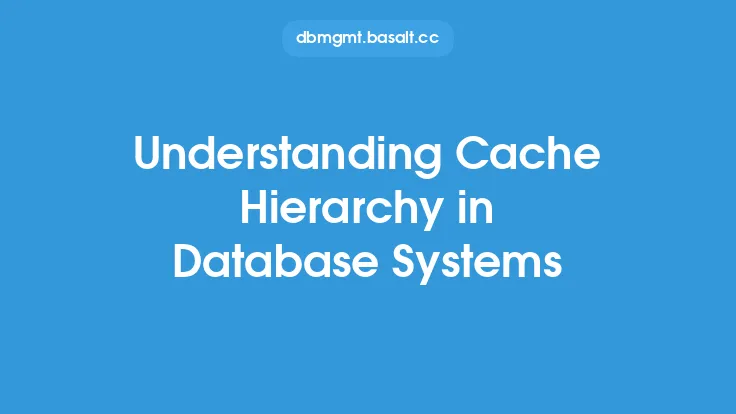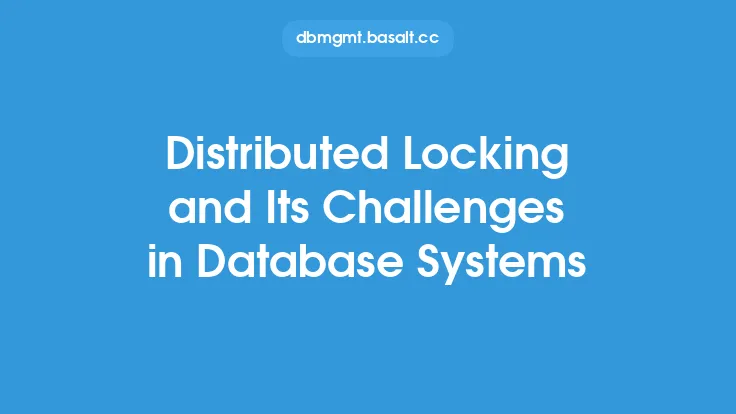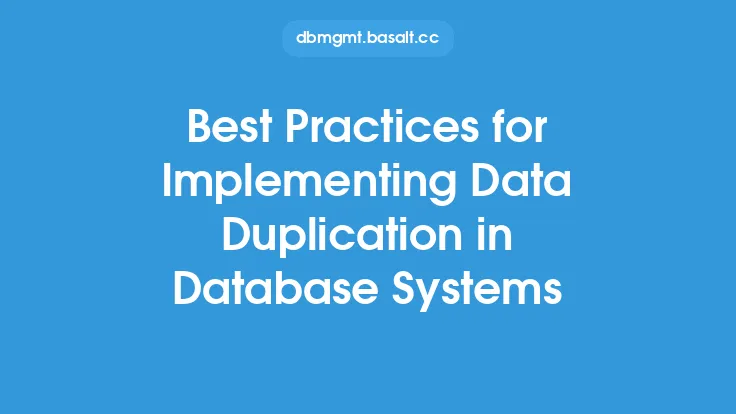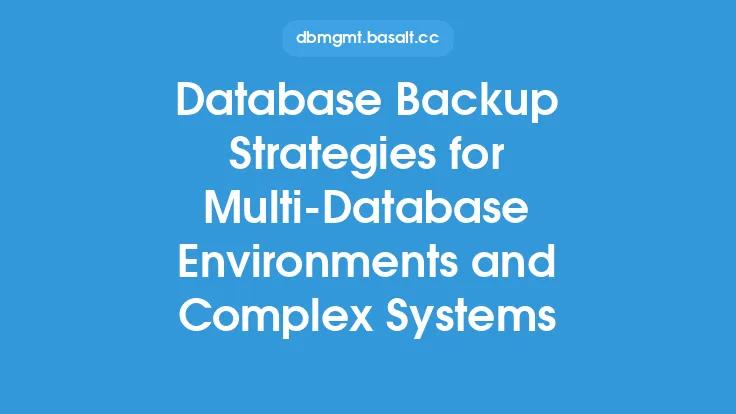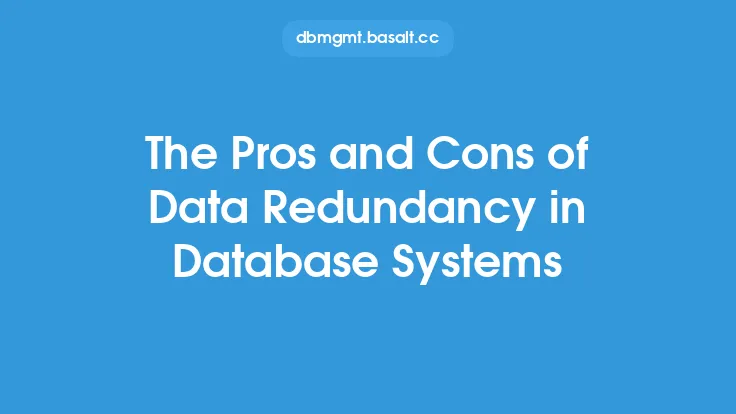Distributed database systems have become increasingly popular in recent years due to their ability to handle large amounts of data and provide high availability. However, as the number of nodes in a distributed system increases, ensuring cache coherence and consistency becomes a significant challenge. Cache coherence refers to the ability of a system to maintain a consistent view of data across all nodes, while consistency refers to the ability of a system to ensure that data is handled correctly and predictably.
Introduction to Cache Coherence
Cache coherence is a critical aspect of distributed database systems, as it ensures that all nodes in the system have a consistent view of the data. There are several cache coherence protocols that can be used to achieve this, including write-through, write-back, and invalidate. Write-through protocols update both the cache and the main memory simultaneously, while write-back protocols update the cache and then write the changes to the main memory at a later time. Invalidate protocols, on the other hand, mark the cache line as invalid when a write operation is performed, ensuring that subsequent reads will retrieve the updated data from the main memory.
Consistency Models
Consistency models are used to define the behavior of a distributed system in the presence of concurrent updates. There are several consistency models that can be used, including strong consistency, weak consistency, and eventual consistency. Strong consistency ensures that all nodes in the system have the same view of the data at all times, while weak consistency allows for temporary inconsistencies. Eventual consistency, on the other hand, ensures that the system will eventually converge to a consistent state, but does not guarantee that all nodes will have the same view of the data at all times.
Cache Coherence Protocols
Cache coherence protocols are used to maintain cache coherence in distributed database systems. These protocols can be classified into two main categories: snoopy protocols and directory-based protocols. Snoopy protocols use a broadcast-based approach to maintain cache coherence, where each node broadcasts its cache updates to all other nodes. Directory-based protocols, on the other hand, use a centralized directory to keep track of cache updates. Snoopy protocols are simpler to implement but can be less scalable, while directory-based protocols are more complex but can handle larger systems.
Distributed Locking Mechanisms
Distributed locking mechanisms are used to ensure consistency in distributed database systems. These mechanisms can be used to lock data items, preventing concurrent updates and ensuring that only one node can modify the data at a time. There are several distributed locking mechanisms that can be used, including pessimistic locking and optimistic locking. Pessimistic locking assumes that conflicts will occur and locks the data item before modifying it, while optimistic locking assumes that conflicts will not occur and only checks for conflicts when the data item is updated.
Multi-Version Concurrency Control
Multi-version concurrency control (MVCC) is a technique used to ensure consistency in distributed database systems. MVCC uses multiple versions of data items to ensure that concurrent updates do not result in inconsistencies. Each version of a data item is assigned a unique timestamp, and the system ensures that only the latest version of the data item is visible to nodes. MVCC can be used to implement snapshot isolation, which ensures that nodes see a consistent view of the data at a particular point in time.
Conflict Resolution
Conflict resolution is a critical aspect of distributed database systems, as it ensures that the system can recover from conflicts that may occur due to concurrent updates. There are several conflict resolution techniques that can be used, including last-writer-wins and multi-version concurrency control. Last-writer-wins resolves conflicts by allowing the last node to update the data item to win, while MVCC resolves conflicts by using multiple versions of the data item.
Scalability and Performance
Scalability and performance are critical aspects of distributed database systems, as they ensure that the system can handle large amounts of data and provide high availability. Cache coherence and consistency protocols can have a significant impact on scalability and performance, as they can introduce additional overhead and latency. Optimizing cache coherence and consistency protocols can help improve scalability and performance, ensuring that the system can handle large amounts of data and provide high availability.
Real-World Applications
Cache coherence and consistency are critical aspects of distributed database systems, and have numerous real-world applications. Distributed databases are used in a variety of applications, including social media, e-commerce, and financial systems. Ensuring cache coherence and consistency is critical in these applications, as it ensures that data is handled correctly and predictably. For example, in a social media application, ensuring cache coherence and consistency ensures that users see a consistent view of their news feed, even in the presence of concurrent updates.
Future Directions
Future directions for cache coherence and consistency in distributed database systems include the use of new technologies such as non-volatile memory and distributed transactional memory. Non-volatile memory can be used to improve the performance of cache coherence protocols, while distributed transactional memory can be used to improve the consistency of distributed database systems. Additionally, the use of machine learning and artificial intelligence can help optimize cache coherence and consistency protocols, ensuring that the system can handle large amounts of data and provide high availability.
Conclusion
In conclusion, cache coherence and consistency are critical aspects of distributed database systems, ensuring that data is handled correctly and predictably. Cache coherence protocols, consistency models, distributed locking mechanisms, and conflict resolution techniques are all used to ensure cache coherence and consistency. Optimizing these protocols and techniques can help improve scalability and performance, ensuring that the system can handle large amounts of data and provide high availability. As distributed database systems continue to evolve, new technologies and techniques will be developed to improve cache coherence and consistency, ensuring that these systems can handle the demands of modern applications.
